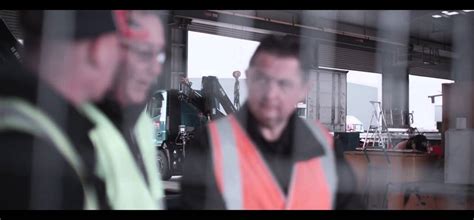In the age of remote work, effective communication is essential for businesses to thrive. However, maintaining clear and consistent communication across dispersed teams can be challenging. This is where communication drills come into play. These structured, repetitive exercises help remote teams develop, refine, and sustain effective communication practices. Regularly practicing these drills ensures that all team members are aligned, responsive, and capable of addressing both routine tasks and unexpected challenges. In this article, we will explore the importance of communication drills in remote work, discuss the types of drills businesses can implement, and offer insights into improving overall communication effectiveness in a remote setting.
xipres.xyz invites you to explore this topic thoroughly.
1. Importance of Communication Drills in Remote Work
In remote work environments, communication can often become fragmented due to physical distance, different time zones, and the absence of face-to-face interaction. Communication drills are essential for bridging these gaps by creating a structured approach to maintaining effective dialogue among team members. These drills help ensure that employees can communicate clearly, respond quickly, and collaborate seamlessly, even under challenging circumstances. By simulating real-world scenarios, communication drills prepare teams to handle crises, resolve issues efficiently, and foster a culture of transparency. They also build confidence and familiarity with communication tools, reducing misunderstandings and delays. Ultimately, regular communication drills enhance team cohesion, productivity, and the ability to manage projects effectively, making them a crucial component of any remote work strategy.

2. Frequency and Scheduling of Drills
Determining the right frequency and scheduling for communication drills is crucial for their effectiveness in a remote work setting. Regularly scheduled drills ensure that communication remains sharp and teams stay aligned, but the frequency should balance consistency with practicality. For most businesses, conducting these drills on a weekly or bi-weekly basis allows teams to refine their skills without overwhelming their schedules. The key is to establish a routine that becomes a natural part of the workflow.
When scheduling drills, consider the needs and availability of all team members, especially if they are working across different time zones. Setting drills at a time that works for everyone demonstrates respect for team members’ time and maximizes participation. Additionally, it’s important to vary the scenarios used in each drill, covering both routine and unexpected communication situations to keep the practice dynamic and relevant.
By establishing a consistent schedule for communication drills, businesses can ensure that remote teams stay prepared, responsive, and capable of adapting to any challenges that may arise, fostering ongoing improvement in communication skills.

3. Types of Communication Drills
There are various types of communication drills that businesses can implement to strengthen remote teams’ collaboration. One common type is scenario-based drills, where teams are presented with a hypothetical situation, such as a sudden project change or a technical issue, and must work together to resolve it. These drills simulate real-life challenges and help employees practice quick, efficient communication.
Another effective drill is the feedback loop exercise, where teams practice providing and receiving feedback in a constructive and timely manner. This type of drill promotes openness, helps resolve conflicts faster, and encourages continuous improvement.
Crisis communication drills focus on how teams handle emergencies or critical situations, ensuring that everyone knows their role and how to communicate effectively during high-pressure events. These drills are particularly useful in industries that require rapid decision-making.
Finally, check-in drills help establish regular touchpoints between team members to keep everyone aligned on goals, progress, and tasks. Incorporating a variety of these drills helps ensure comprehensive communication training, equipping teams with the skills needed to handle a wide range of scenarios.

4. Tools and Technologies for Effective Drills
Effective communication drills rely heavily on the right tools and technologies to simulate real-world scenarios and streamline the process. Video conferencing platforms like Zoom, Microsoft Teams, or Google Meet are essential for conducting face-to-face virtual meetings and drills. These platforms allow for easy collaboration and the ability to practice both verbal and non-verbal communication, which is crucial in a remote work environment.
Instant messaging tools such as Slack or Microsoft Teams Chat enable quick, real-time communication, making them ideal for drills that focus on handling urgent situations or project updates. Additionally, project management tools like Asana, Trello, or Monday.com can be integrated into communication drills to ensure teams can effectively track tasks, assign responsibilities, and provide status updates.
For feedback loops and collaboration exercises, document-sharing tools like Google Drive or Dropbox allow team members to share and review work in real-time. These technologies help teams practice providing feedback efficiently while keeping everyone on the same page.
By using these tools in communication drills, businesses can create realistic, hands-on training experiences that help remote teams improve their communication skills and adapt to the demands of a virtual work environment.
5. Involving All Team Members
For communication drills to be truly effective, it’s important to involve all team members, regardless of their role or location. Inclusive participation ensures that every individual has the opportunity to practice and refine their communication skills, which is essential in a remote work setting where clear, timely interactions are critical.
A key aspect of involving all team members is to create drills that are relevant to each person’s responsibilities. Tailoring scenarios to reflect the diverse roles within the team helps ensure that the drills are practical and applicable. For example, a drill might focus on how a marketing team communicates a last-minute campaign change to the design and content teams, allowing each department to practice their specific communication protocols.
Leaders should also emphasize the importance of equal participation, making sure that no one dominates the conversation or drills. Encouraging quieter team members to contribute and providing opportunities for everyone to lead drills strengthens overall team cohesion and confidence.
By actively involving every team member, businesses can foster a sense of unity and shared responsibility for communication success. This approach not only improves individual skills but also strengthens the team’s ability to collaborate effectively, ensuring smoother interactions across all levels of the organization.
6. Evaluating Drill Effectiveness
To maximize the benefits of communication drills, it’s essential to regularly evaluate their effectiveness. Measuring the outcomes of each drill helps identify areas for improvement and ensures that the exercises are aligned with the team’s communication needs.
One way to assess effectiveness is by collecting feedback from participants. After each drill, team members can share their thoughts on what worked well and what could be improved, providing valuable insights into the drill’s impact. This feedback can be gathered through anonymous surveys or open discussions, depending on the team’s preference.
Tracking key performance indicators (KPIs) related to communication is another method. These can include response times, clarity of messaging, and the ability to resolve simulated issues efficiently. By comparing these metrics over time, businesses can see whether the drills are enhancing communication skills.
Additionally, reviewing real-world team performance after completing several drills can indicate if improvements are translating into daily operations. If teams handle challenges more smoothly and communication breakdowns decrease, it’s a clear sign that the drills are working.
Continuous evaluation ensures that communication drills remain relevant, effective, and tailored to the evolving needs of the team.
7. Common Challenges and Solutions
Implementing communication drills in a remote work setting can come with several challenges. One common issue is resistance from team members who may view drills as unnecessary or time-consuming. To address this, it’s essential to emphasize the value of these drills in enhancing communication skills and overall team efficiency. Highlighting real-world examples of successful outcomes can motivate participation and buy-in.
Another challenge is coordinating schedules for remote teams, especially those in different time zones. To overcome this, businesses can establish a rotating schedule for drills that accommodates various time zones, ensuring that everyone has a chance to participate. Alternatively, asynchronous drills can be implemented, where teams engage in recorded simulations or discussions at their convenience.
Technical difficulties can also hinder drill effectiveness. Ensuring that all team members have access to the necessary tools and technologies is crucial. Regularly testing and updating these tools can prevent disruptions during drills.
Lastly, maintaining engagement during drills can be difficult. Incorporating gamification elements or friendly competitions can make drills more enjoyable and foster team spirit. By proactively addressing these challenges, businesses can create a more effective and engaging environment for communication drills.
8. Real-World Examples of Successful Drills
Several organizations have successfully implemented communication drills that have significantly improved their remote work dynamics. For instance, a tech company conducted scenario-based drills where teams were tasked with resolving a critical software bug under tight deadlines. This exercise not only enhanced their problem-solving abilities but also improved their collaboration and response times during actual emergencies.
Another example is a marketing agency that implemented weekly feedback loop drills. During these sessions, team members practiced giving and receiving constructive feedback on project drafts. This approach fostered a culture of openness and significantly reduced revision times in their workflows.
A global consulting firm also embraced crisis communication drills by simulating client emergencies, requiring teams to navigate high-pressure situations collaboratively. The result was a marked improvement in their ability to manage client expectations and communicate effectively under stress.
These real-world examples demonstrate how tailored communication drills can lead to tangible improvements in teamwork, responsiveness, and overall project success in remote work environments.
9. Continuous Improvement and Follow-Up
Continuous improvement and follow-up are essential components of an effective communication drill strategy in remote work environments. After conducting drills, businesses should not only evaluate their effectiveness but also implement actionable steps based on the feedback received. This iterative approach allows teams to adapt and refine their communication practices continuously.
Setting follow-up meetings to discuss the outcomes of drills can foster a culture of open dialogue and transparency. During these meetings, teams can identify what worked well and what didn’t, ensuring that every participant has a voice in the improvement process. Additionally, establishing a repository of lessons learned from each drill can serve as a valuable resource for future training sessions.
Encouraging team members to practice their communication skills outside of scheduled drills is another way to promote continuous improvement. This can be done through informal check-ins, team-building activities, or peer-to-peer mentoring.
Lastly, regularly updating the drills to reflect new challenges and evolving team dynamics keeps the exercises relevant and engaging. By embracing a mindset of continuous improvement and follow-up, organizations can ensure that their communication practices remain effective, ultimately leading to better collaboration, enhanced productivity, and a more cohesive remote work environment.
Incorporating communication drills into remote work strategies is vital for fostering effective collaboration and team cohesion. By regularly practicing, evaluating, and refining communication skills, businesses can navigate challenges more efficiently and enhance overall productivity. Embracing continuous improvement ensures that remote teams remain agile, responsive, and prepared for any situation.
xipres.xyz